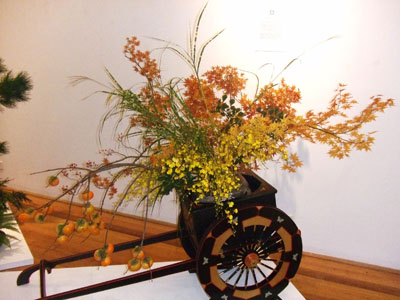National Gallery of Victoria (NGV) is giving an exhibition of “Japanese Tea Ceremony and Zen Buddhism” from April 15 to August 29.
The opening ceremony was held on April 14 at NGV.
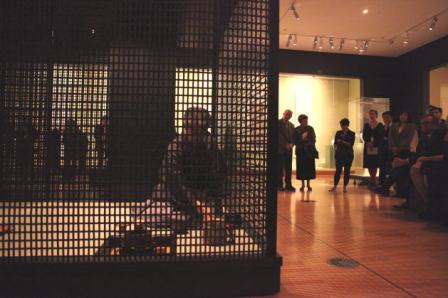
During the period, the Melbourne branch of “Urasenke” will be performing eight tea ceremonies as follows;
May 23 Sunday 12:00PM to 1:00PM, 2:00PM to 3:00PM
June 30 Wednesday 12:00PM to 1:00PM, 2:00PM to 3:00PM
July 25 Sunday 12:00PM to 1:00PM, 2:00PM to 3:00PM
August 25 Wednesday 12:00PM to 1:00PM, 2:00PM to 3:00PM
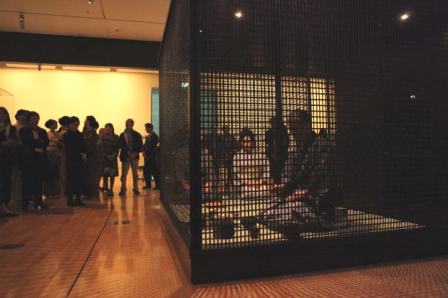
The tearoom is designed specially for this exhibition by Mr.Shigeru Uchida, an interior designer.
Mr. Uchida’s Profile
Awards:
1987 Received the Mainichi Design Award
2000 Received Education Minister’s Art Encouragement Prize
2007 Received the Medal with Purple Ribbon
Representative works:
Boutiques for YOHJI YAMAMOTO
Collapsable tearoom, JI-AN, GYO-AN, and SO-AN
Hotel MOJIKO HOTEL
Permanent collection:
At the Metropolitan Museum and many other museums.
Books:
Bounds of Privacy
Japan Interior Vol.1-4 (co-author )
Japanese Interior Design
Ordinary Design
Others:
1985 Worked on the Japanese government pavilion for Tsukuba World Science Exposition
2007 Worked on the Tamagawa Art Line Project
He is also known as a tearoom designer.
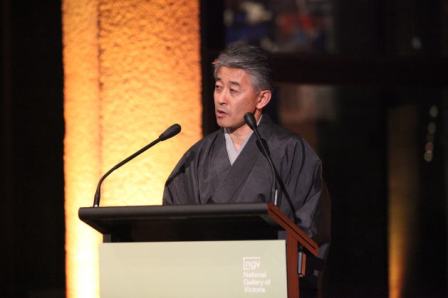
The tea ceremony was sponsored by the Melbourne branch of “Urasenke”,superintended by Mr. Susumu Hasegawa, the Japanese Consul General in Melbourne.
The picture shows Mr.Hasegawa giving a lecture on the history of tea ceremony and Zen Buddhism.
This exhibition focuses on the relationship between tea and Zen Buddhism in China and Japan. The oldest book about tea, “Tea Classic” was written in the Tang Dynasty (618-907).
Tea and Zen were introduced into Japan by Japanese monks who had been to China to study Buddhism between the 6th and 9th centuries.
For this exhibition, NGV made an investigation into the philosophical and spiritual background of tea and Zen Buddhism and their relationship. “Wabi, Sabi” or the notion of “beauty of imperfection”, which represents the spirit of tea ceremony, reached its peak of refinement in Muromachi Era (1333-1562)
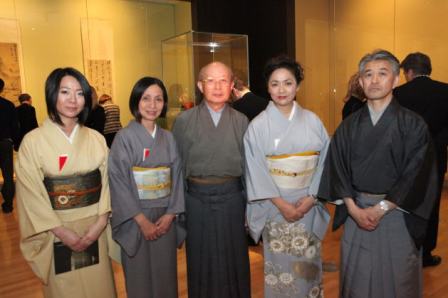
The picture shows from the left Ms. Takako Miura, Ms.Yuko Jansen, Mr.Yoshiaki Matsunaga, the head of Sydney branch office of “Urasenke”, Ms. Kumiko Suzuki , and Mr. Hasegawa, the Japanese Consul General in Melbourne.
Wayne Crothers, Curator, Asian Art, NGV said:
“There could not be a more ideal work than Uchida Shigeru’s contemporary tea house to present Japanese tradition as an important and relevant influence in Japan’s contemporary society.
The tea ceremony has been handed down from master to pupil and can be seen as a living art form pervading the twentieth century to the present day.”



